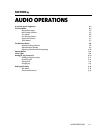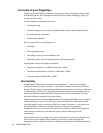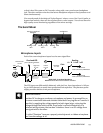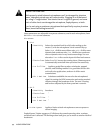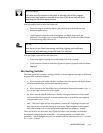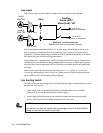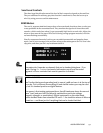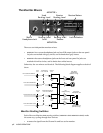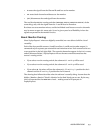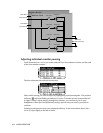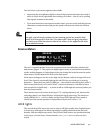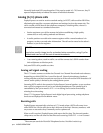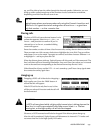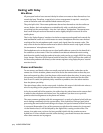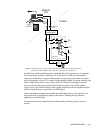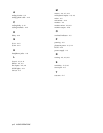AUDIO OPERATIONS 4-9
¥ B routes the signal from the Channel B send bus to the monitor.
¥ A B routes both channel send busses to the monitor.
¥ (OFF) disconnects the send signal from the monitor.
The two Monitor RECEIVE routing switches (MONITOR 1 RECEIVE, MONITOR 2 RECEIVE) do the
same thing, only with the signal from the A and B Receive Decoders.
But these are stereo monitor mixers, and the individual send busses or receive channels
may be mono or part of a stereo pair. So we’ve given you a lot of flexibility in how the
signals are panned in the monitor circuits.
About Monitor Panning
Since ZephyrExpress’ mixers are digitally controlled, we were able to build in a lot of
versatility.
Each of the four possible sources (A and B send bus, A and B receive codec output) is
connected to four separate pan controls for each monitor mixer. Each control can be set
to any position in the left/right field. (The controls themselves appear in the Audio menu,
and are discussed below.) ZephyrExpress will use the one control that matches that
source’s routing switch:
¥ If you select A on the routing switch, the submenu’s A setting will be used.
¥ If you select B on the routing switch, the submenu’s B setting will be used.
¥ If you select AB, the mixer will use the submenu’s AB setting A position for the A
channel and the AB setting B position for the B channel.
The drawing that follows describes what the software’s actually doing. Assume that the
hidden “Monitor 1 Receive” block is identical to the Send block you can see. By the way,
this is all repeated for the MONITOR 2 circuit... making a total of 16 pan pots in
ZephyrExpress.



